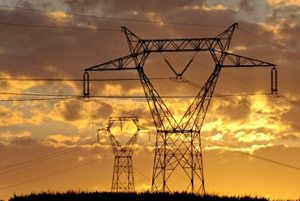
The South African government set a universal access to basic electricity for all its citizen by 2012, and the responsibility for achieving the objective lies with Eskom SOC, South Africa’ s power utility company in conjunction with local municipalities and the target is the rural communities.
Prior to 1990, less than a third of the population had access to electricity and the 1996 census indicated that only 58 percent of the country’s population lived in formal housing, around 60 percent had access to piped drinking water, 58 percent had access to electricity, and only one in four non-black South African households was electrified.
The electrification of homes can be split into four broad categories which are deep rural: less than 70 homes per square kilometre and between 50 and 120kW per square kilometre; rural: 70 to 150 homes per square kilometre and between 50 and 120 kW per square kilometre; peri-urban: 150 10 750 homes per square kilometre and load densities are generally between 120 and 750 kW per square kilometre; and urban: greater than 750 homes per kilometre and load densities are upwards of 1000kW per kilometre.
However, life is getting better for many South Africans with each passing day as access to basic services have become a reality, through efforts that the government has embarked on, such as the free basic energy (FBE) programme – low income households are eligible for 50kWh of free electricity per month, ensuring that they also benefit from the Integrated National Electrification Programme (INEP).
As of March 2011, Eskom had connected four million rural customers as part of the INEP, which government introduced to coordinate electrification in the country. This has brought the overall level of rural electrification in South Africa from 36 percent in 1994 to 83 percent household connections currently. Rural electrification has increased from 12 percent in 1994 to almost 60 percent at the moment.
Further, more than 11, 000 schools have been electrified and 400 clinics have also been electrified since 1991, allowing for better quality of services to thousands of South Africans who access these facilities.
Considering population and household growth, the switch-on of the fourth-millionth connection is a significant achievement against a continuously moving target. Government and particularly, Eskom, continue to consider options and innovative ways to get electricity to communities and households that do not have electricity quicker and more cost- effectively.
Challenges
There have been challenges in the process, which include the increase in costs for connections for instance due to accessing the households as the roll- out gets to sparsely populated areas amongst others.
Challenges remain in ensuring that all households have access to electricity (government’s goal for 100 percent access). About 3.4 million households remain without access to electricity. About 20 percent of these are in the Eastern Cape.
Government has allocated more than R3.1 billion (US$302 million) towards reducing households who remain un-electrified, of which about R500 million (US$50.3 million) is allocated to Eskom to implement in the Eastern Cape.
There is a greater need for improved coordination between implementing agents, particularly Eskom and municipalities, in light of the challenges that some of the municipalities face in implementing electrification projects.
Eskom is putting together a framework within which they can work with municipalities, particularly the ones that are struggling to, amongst other things, achieve greater improvement in increasing electrification connections.
Government is attending to backlogs which exist in KwaZulu-Natal, the Eastern Cape, and Gauteng as well as certain areas in and around the eight metropolitan municipalities.
